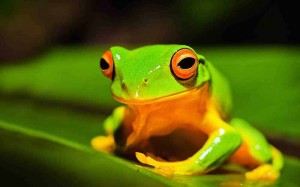Skip to content
Subtropical Rainforest
Subtropical Rainforest
Subtropical Rainforest was once widespread around the Byron Bay region with its rich volcanic soils and high rainfall.
Cape Bay is the most easterly point of Australia, where the ocean and mountains converge. Winds coming off the ocean, laden with moisture from the warm ocean currents, produce rainfall when they hit the mountains. Byron Bay and its hinterland are home to many species of native plants and animals, as well as a diverse range of ecosystem types. Since white settlement much land was cleared for agriculture.
Many areas have become invaded by Camphor Laurel (Cinnamomen camphora) and many other weeds. Nowadays a lot of landowners are keen to re-establish rainforest on their properties.
This can be done in different ways: remnant native vegetation can be kept weed free and assisted to expand; Camphor Laurel dominated forest can be converted to rainforest or empty paddocks can be planted with rainforest seedlings. Under the right conditions tree growth can be rapid, a basic canopy can be established in approximately 5 years.
On any restoration project it is essential to control the weeds, because they can also grow quickly and out-compete natives, over- run plantings and smother remnant vegetation.
Wildlife of Subtropical Rainforest
Wildlife will be more common on your property if you have vegetation more suited to the requirements of native animals. A greater number, and more diverse range, of wildlife will be present in areas of vegetation that have more native plants and less weeds. By restoring bushland and planting trees you can provide habitat for some of the local birds, mammals, reptiles, frogs and insects.
Wildlife attracting plants can also be grown around houses and gardens, and as screens and windbreaks. The environmental and aesthetic values of properties increase with the presence of native wildlife.
Landowners who restore their land can enjoy the satisfaction of sighting wildlife and knowing that they are helping native animal populations recover.

Share This Story, Choose Your Platform!
